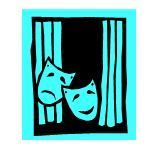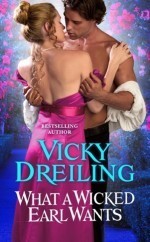Behind the Scenes: My Daring First Book & Giveaway

 When my first historical romance HOW TO MARRY A DUKE released in early January 2011, I spent an entire month blogging at various sites to create awareness (a marketing term for getting your name/brand out there). I wrote about how my love of Jane Austen’s EMMA influenced me to write about a matchmaking heroine. The one aspect I’ve never discussed in detail is the unusual structure of HOW TO MARRY A DUKE and the marketing techniques I used to make the book stand out in the crowded Regency Historical Romance genre.
When my first historical romance HOW TO MARRY A DUKE released in early January 2011, I spent an entire month blogging at various sites to create awareness (a marketing term for getting your name/brand out there). I wrote about how my love of Jane Austen’s EMMA influenced me to write about a matchmaking heroine. The one aspect I’ve never discussed in detail is the unusual structure of HOW TO MARRY A DUKE and the marketing techniques I used to make the book stand out in the crowded Regency Historical Romance genre.
During blog tours, I told the story of how I watched The Bachelor TV show and came up with the high concept of The Bachelor in Regency England, minus the hot tub and camera crew. What I didn’t discuss was the marketing behind my decision to use a contemporary element in the novel. At the time, I worked in marketing for a Fortune 500 corporation, and I knew that I needed to position my novel. In marketing, positioning is used to make your brand distinctive among your competitors. Because of my marketing background, I was predisposed to think in terms of how I could differentiate my offering (the novel). Essentially, I knew that I had to provide a unique plot that also included classic and beloved reader tropes. HOW TO MARRY A DUKE includes forbidden romance (Romeo & Juliette), reformed rake, and matchmaker tropes.
I happen to really love humorous romance novels, so I knew that was an element I wanted to include. So I made the decision to periodically sprinkle in spoofs of modern dating practices as one means of adding humor. Here’s an example of how I used a spoof in the novel:
Tristan meant to explain that he would select a handful of candidates to interview after a general thirty-minute conversation, but Miss Mansfield intervened.
“I have devised a plan to stay within the time frame,” she said. “At five minutes per interview, we will finish twenty minutes ahead of schedule.” She favored him with a sugary smile. “Think of it as speedy courting.”
There are other unusual aspects of the book:
I had to create new terminology to fit the time period. I substituted courting for dating, and thus, the contest to wrangle win a proposal from Tristan became known as the courtship. The bachelorettes became bridal candidates.
There are no rose ceremonies for the eliminations. Instead, the bridal candidates privately received either invitations or regrets. Why? Because public eliminations would have humiliated the young ladies and created scandal among the ton.
Clearly, helicopter rides, overnight dates, and bungee jumping were out of the question. While I couldn’t include karaoke, one of the young ladies ‘entertained’ the duke with a dreadful singing exhibition.
In place of a camera crew, I substituted the scandal sheets, the Regency version of tabloids.
I got a number of ideas for the book during my ten business trips to London from 2005 – 2008.
While taking a riverboat tour on the Thames, I conjured up the idea for the characters to travel on a barge down the river.
During a walking tour in Mayfair, I saw the outside of Beau Brummel’s town house. The tour guide explained that animal fat was used to light the tall lamps at many of the surrounding town houses. In my novel, there is a reference to these lamps at Tessa’s town house.
In one scene, the hero and heroine experienced an especially bumpy carriage ride. That idea occurred to me during a transatlantic flight home from London. I dubbed that flight the Bucking Bronco because it was the worst and longest bout of turbulence I’d ever experienced.
On that same flight, dozens of British schoolgirls kept exchanging seats, exasperating the flight attendants. I included a similar incident in a scene that occurs at the opera.
During a tour of Apsley House, the Duke of Wellington’s residence, I viewed the Waterloo Gallery, which really helped me envision Tristan’s fictional gallery at Gatewick Park. (A bit of Trivia: Wellington purchased the house from his brother in 1817. Waterloo Gallery was designed in 1828 by Benjamin Dean Wyatt.)

You may wonder why I’ve included an image of a house. I’m a visual learner, and the entire time I wrote HOW TO MARRY A DUKE, I knew there was one overarching plot to the novel. The entire book is about finding a bride for the duke.
What are some unusual historical romances you’ve read? How did the author differentiate her book from all the other historical romances you’ve read?
Leave a comment for a chance to win signed copies of HOW TO MARRY A DUKE and my latest release WHAT A WICKED EARL WANTS. (US Only)




